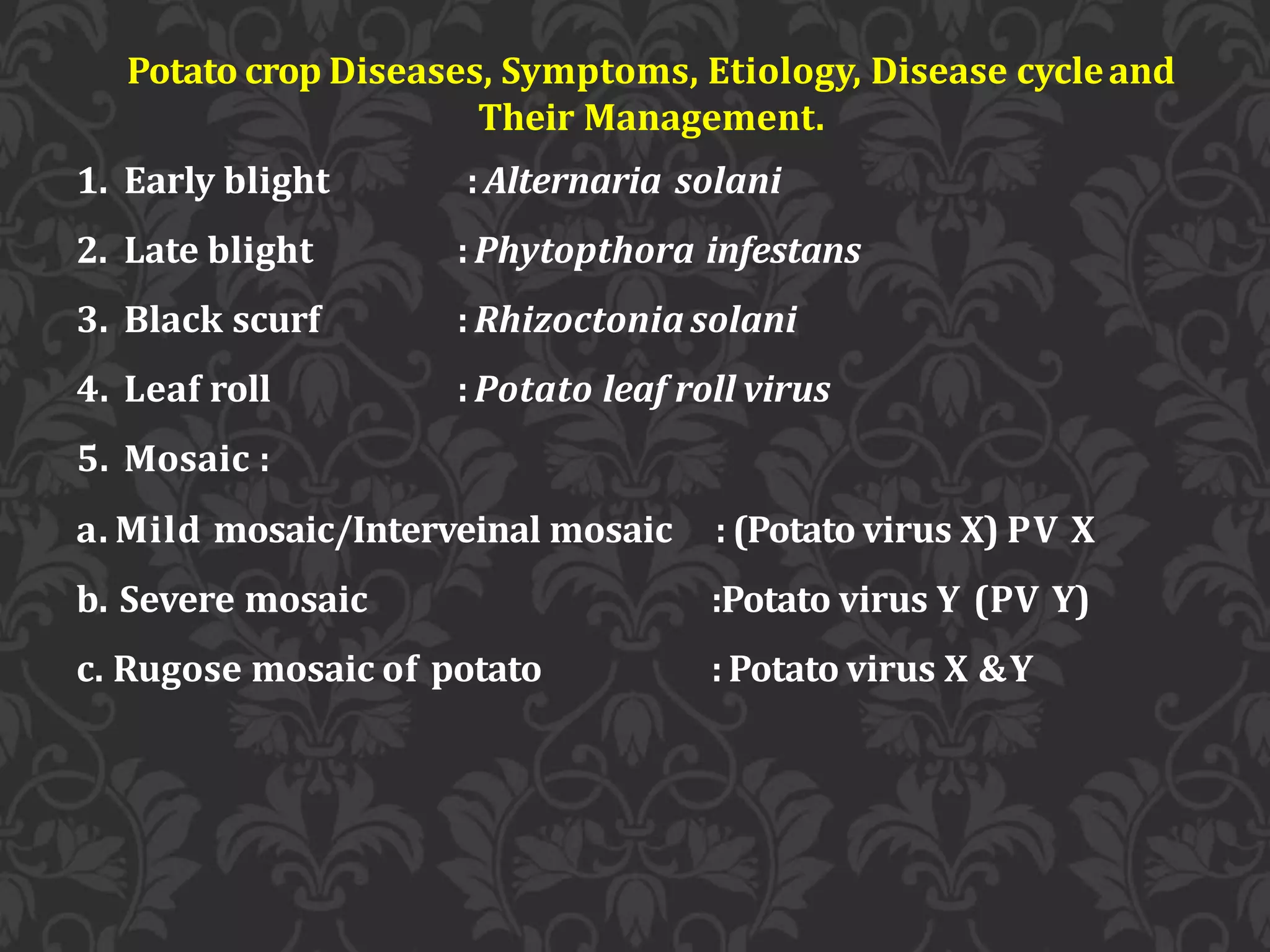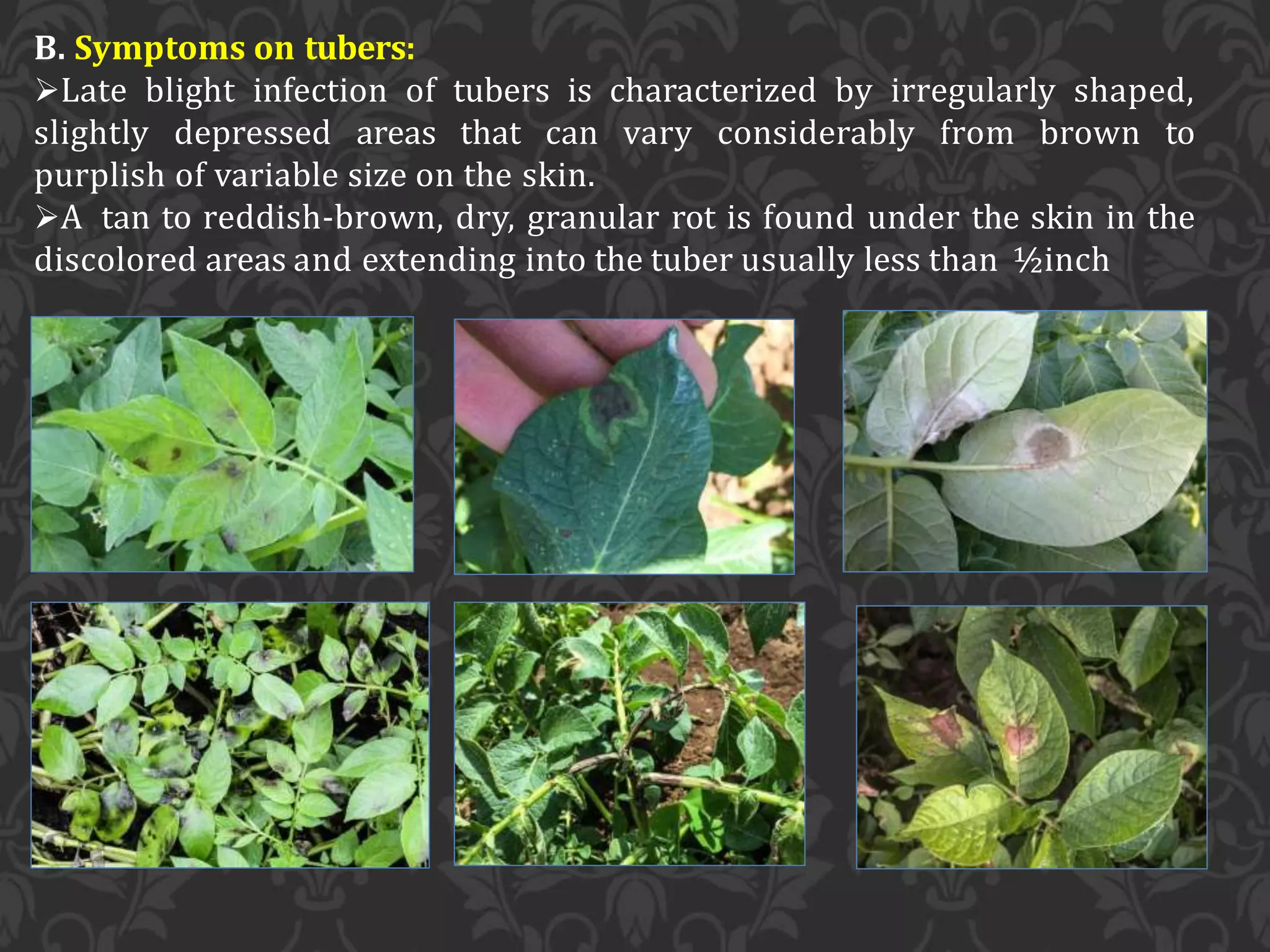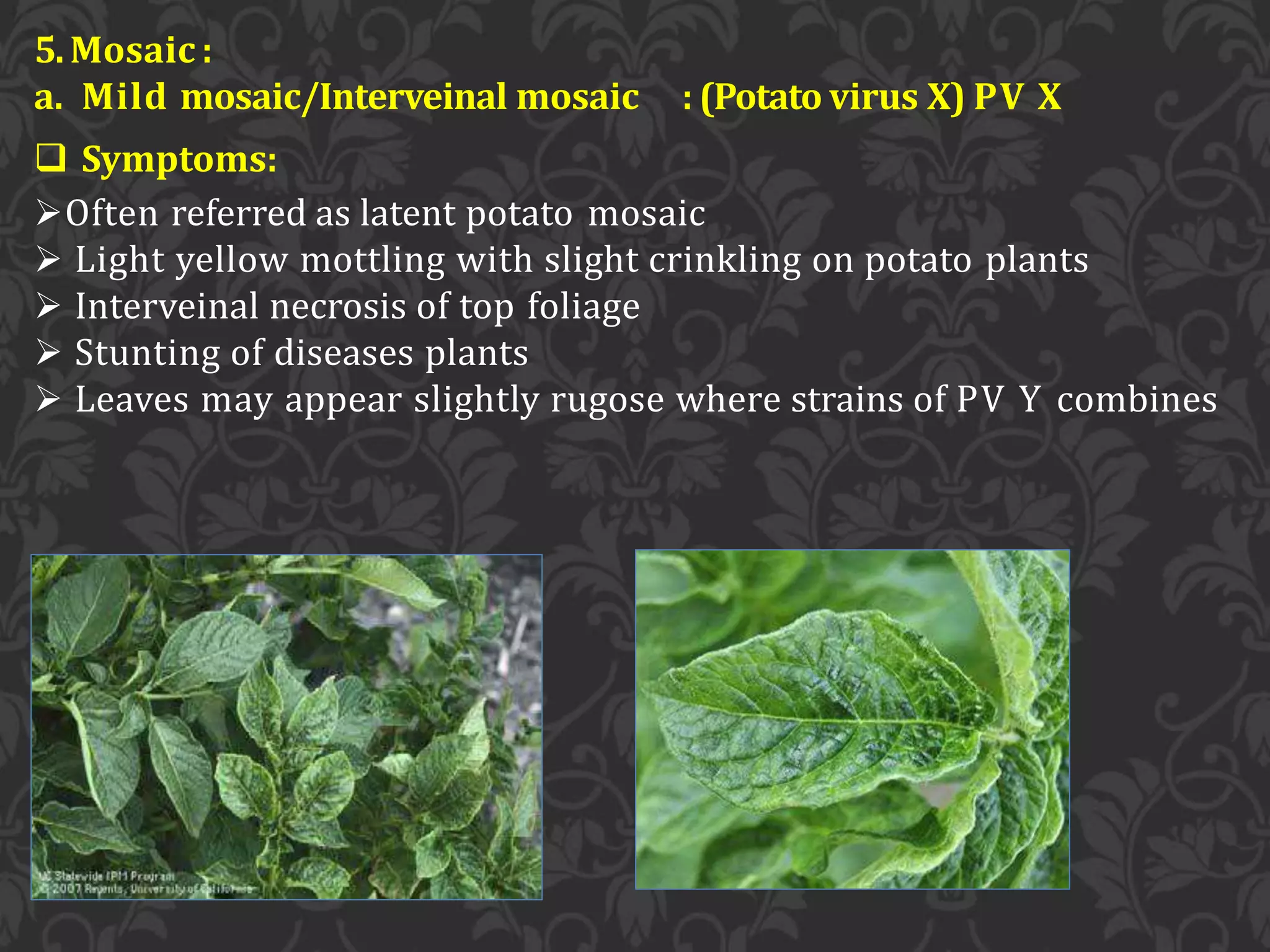The document discusses various potato crop diseases, including early blight, late blight, black scurf, leaf roll, and mosaic, detailing their symptoms, etiology, disease cycles, and management strategies. Diseases are caused by various pathogens like Alternaria solani, Phytophthora infestans, and different potato viruses, with symptoms affecting foliage, tubers, and plant health. Management practices include using disease-free seeds, crop rotation, and application of fungicides and insecticides to control the spread and minimize the impact of these diseases.

















